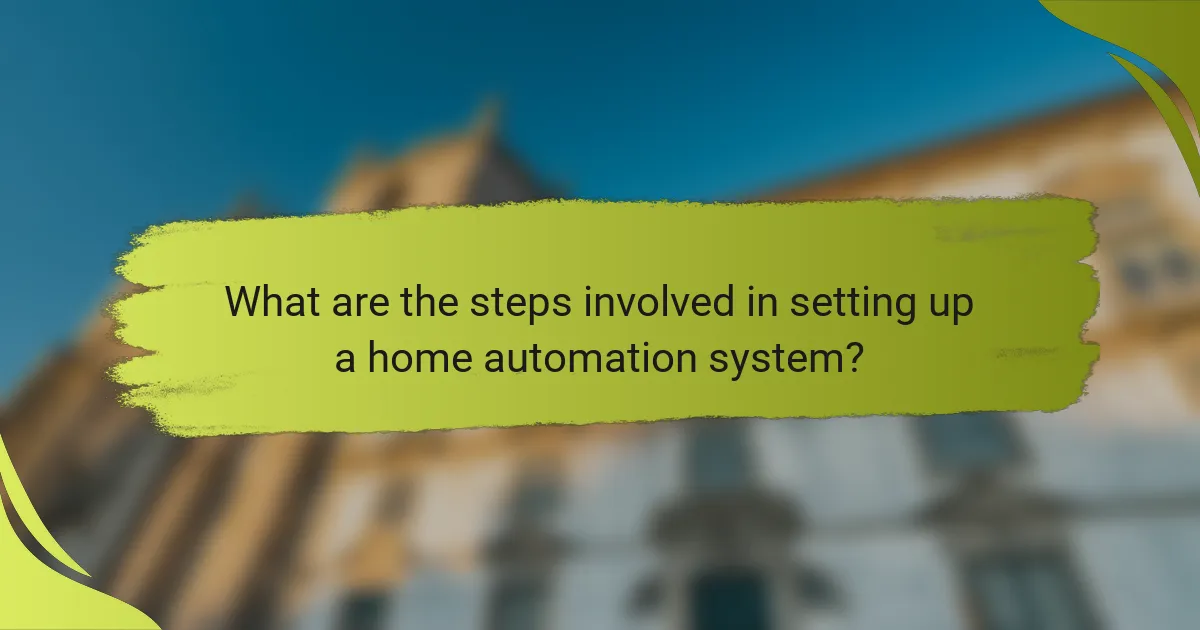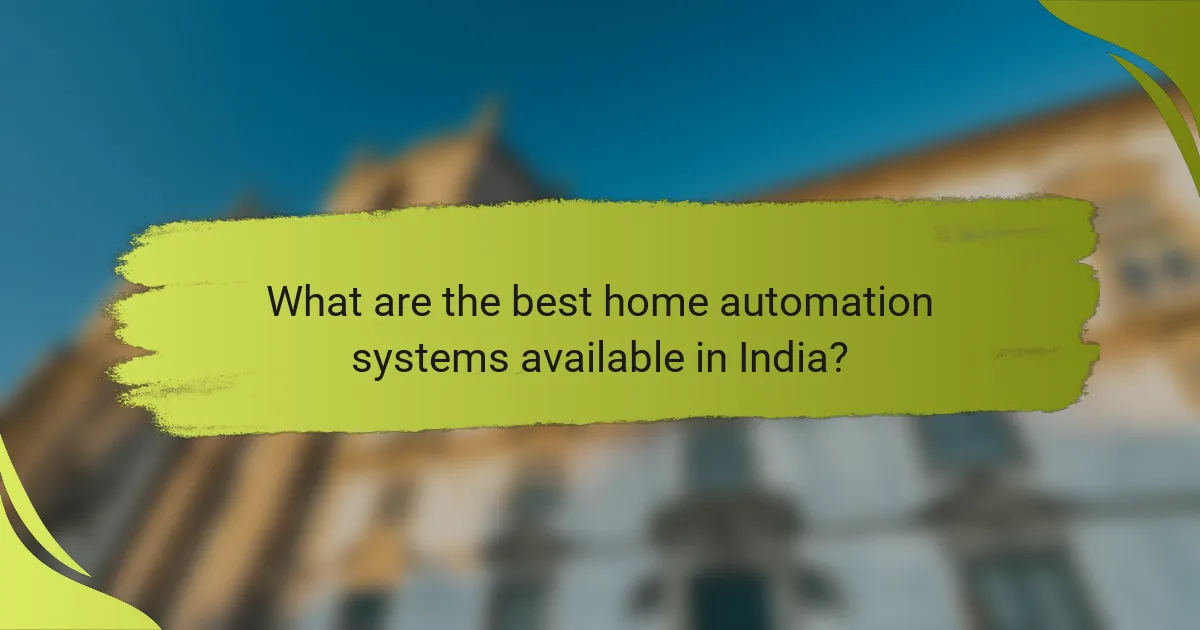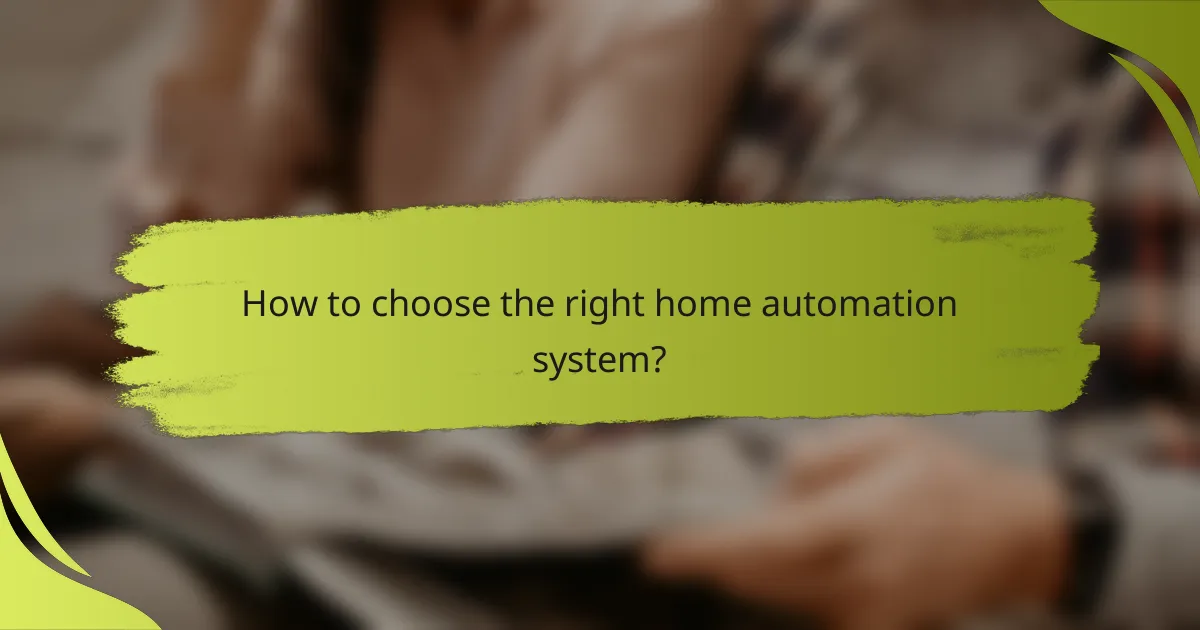Setting up a home automation system can vary significantly in timeframe, typically ranging from a few hours to several days. The duration largely depends on the complexity of the system and the number of devices being integrated. A basic setup may be completed quickly, while more comprehensive installations often require professional assistance and additional time for proper configuration and testing.

How long does it take to set up a home automation system in India?
Setting up a home automation system in India typically takes anywhere from a few hours to several days, depending on the complexity of the system and the number of devices involved. A basic setup can be completed quickly, while a more comprehensive installation may require professional assistance and additional time.
Typical installation timeframe
A simple home automation system, which may include smart lighting and basic security features, can often be set up within a few hours. More complex systems that integrate multiple devices, such as smart thermostats, advanced security cameras, and home entertainment systems, may take one to three days to install and configure properly.
For larger homes or extensive systems, the installation process could extend beyond three days, especially if electrical work or network upgrades are necessary. It’s advisable to plan for potential delays when scheduling the installation.
Factors affecting setup duration
Professional installation may speed up the process, as experienced technicians can navigate challenges more efficiently. Conversely, DIY installations may take longer due to the learning curve and troubleshooting. Always consider the complexity of the desired features and the need for compatibility among devices when estimating setup time.

What are the steps involved in setting up a home automation system?
Setting up a home automation system involves several key steps, including initial consultation, system design and planning, installation, and testing. Each step is crucial for ensuring that the system meets your specific needs and functions effectively.
Initial consultation
The initial consultation is the first step in setting up a home automation system. During this phase, a professional will assess your home, discuss your needs, and identify the areas you want to automate, such as lighting, security, or climate control.
This meeting typically lasts one to two hours and may involve a walkthrough of your home to evaluate existing infrastructure. It’s essential to communicate your preferences and budget clearly to ensure the proposed solutions align with your expectations.
System design and planning
After the consultation, the next step is system design and planning. This involves creating a detailed blueprint of the automation system, including the types of devices needed, their locations, and how they will integrate with each other.
Considerations during this phase include compatibility with existing devices, network requirements, and future scalability. A well-thought-out design can save time and costs during installation and ensure a smoother user experience.
Installation process
The installation process can vary significantly based on the complexity of the system. For basic setups, installation may take a few hours, while more extensive systems could require several days.
During installation, professionals will mount devices, run necessary wiring, and connect everything to your home network. It’s crucial to ensure that all components are installed according to manufacturer specifications to avoid issues later on.
Testing and configuration
Once the installation is complete, testing and configuration are essential to ensure everything functions as intended. This step involves checking each device, adjusting settings, and ensuring that the system operates smoothly across all platforms.
Testing typically takes a few hours and may involve user training to familiarize you with the system’s features. Proper configuration can enhance performance and security, so it’s important not to rush this phase.

What are the best home automation systems available in India?
Some of the best home automation systems available in India include Google Nest, Amazon Echo Plus, and Philips Hue. These systems offer a range of features that enhance convenience, security, and energy efficiency in homes.
Google Nest
Google Nest is a versatile home automation system that integrates seamlessly with various smart devices. It allows users to control lighting, temperature, and security systems through voice commands or a mobile app.
Key features include compatibility with a wide range of smart products and the ability to create routines for automated actions. For instance, you can set your lights to turn on at sunset or adjust the thermostat based on your schedule.
Amazon Echo Plus
The Amazon Echo Plus serves as a smart speaker and a hub for controlling compatible smart home devices. It uses Alexa, Amazon’s voice assistant, to manage tasks like playing music, setting reminders, and controlling smart appliances.
Consider its built-in Zigbee hub, which simplifies the connection of various smart devices without needing additional hubs. Users can easily add devices, but it’s essential to check compatibility before purchasing new products.
Philips Hue
Philips Hue specializes in smart lighting solutions that can transform the ambiance of any space. Users can control the brightness and color of their lights through an app or voice commands, creating customized lighting scenes.
One of the advantages of Philips Hue is its extensive range of bulbs and fixtures, which can be integrated with other smart home systems. However, setting up the Hue Bridge is necessary for full functionality, so ensure to plan for this additional component in your budget.

How to choose the right home automation system?
Choosing the right home automation system involves assessing compatibility with your existing devices and evaluating user interface options. Focus on systems that seamlessly integrate with your current technology while offering an intuitive control experience.
Assessing compatibility with existing devices
Start by identifying the devices you already own, such as smart lights, thermostats, and security systems. Check if the home automation system supports these devices, as compatibility is crucial for a smooth setup.
Look for systems that adhere to common standards like Z-Wave or Zigbee, which ensure a wider range of compatible devices. Avoid systems that lock you into proprietary technology, as this can limit future upgrades and integrations.
Evaluating user interface and control options
The user interface should be straightforward and user-friendly, allowing for easy navigation and control. Consider whether the system offers a mobile app, web interface, or voice control options, as these can significantly enhance your experience.
Test out the interface if possible, ensuring it meets your preferences for accessibility and responsiveness. A good user interface can save you time and frustration, making it easier to manage your home automation system effectively.

What are the costs associated with home automation setup?
The costs of setting up a home automation system can vary significantly based on the complexity of the system, the devices chosen, and installation requirements. Generally, initial setup costs can range from a few hundred to several thousand dollars, depending on the features and scale of the automation.
Average installation costs in India
In India, the average installation costs for a home automation system typically range from INR 30,000 to INR 2,00,000. This range depends on factors such as the number of devices, the type of technology used, and whether professional installation is required.
For basic systems, you might spend around INR 30,000 to INR 50,000, while more advanced setups with integrated features can exceed INR 1,00,000. It’s advisable to get multiple quotes from installers to ensure competitive pricing.
Ongoing maintenance expenses
Ongoing maintenance expenses for home automation systems can vary, but they generally include software updates, device replacements, and occasional service calls. Expect to budget around 5-10% of the initial setup cost annually for maintenance and support.
For example, if your initial setup cost was INR 1,00,000, you might spend INR 5,000 to INR 10,000 each year on maintenance. Regular checks and updates can help prevent larger issues and ensure your system operates smoothly over time.

What are common challenges during home automation setup?
Common challenges during home automation setup include technical issues and integration problems. These obstacles can hinder the seamless operation of devices and systems, making it crucial to address them early in the process.
Technical issues
Technical issues often arise from compatibility problems between devices or software. For instance, some smart devices may require specific firmware updates or may not support certain wireless protocols, leading to connectivity failures.
To mitigate these issues, ensure that all devices are compatible with your chosen home automation platform. Research and verify specifications before purchasing, and consider using devices that adhere to common standards like Zigbee or Z-Wave.
Integration problems
Integration problems occur when devices from different manufacturers fail to work together as intended. This can be due to differing communication protocols or lack of support for certain features across platforms.
To avoid integration issues, opt for devices that are known to work well with your primary home automation system. Utilizing a central hub can also help streamline communication between various devices, enhancing overall functionality.
